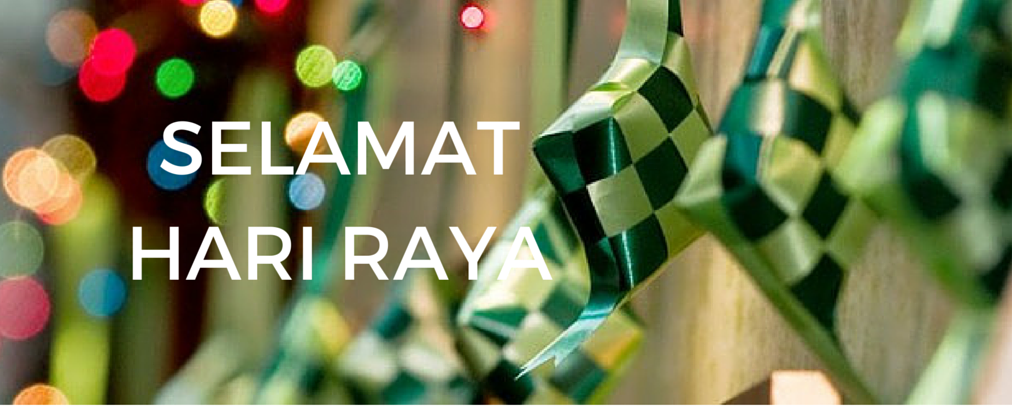Also known as Hari Raya Aidilfitri, Hari Raya Puasa is the most prominent and celebrated occasion in the Muslim community. Do you know that Hari Raya means “grand day of rejoicing” and Puasa means “fasting”? This festival marks the end of the Islamic holy month of Ramadan, and the start of a new month, Syawal.
Whether you are planning on visiting your Muslim friends during this Hari Raya Puasa or planning to head down to the Geylang Serai Bazaar, here’re 7 interesting things about Hari Raya Puasa you probably didn’t know.
1. Fasting Is One Of Islam’s Five Pillars

The importance of fasting among Muslims cannot be overemphasised. Prior to the festival, Ramadan is a period of sober repentance for Muslims. The purpose is to cultivate self-discipline. Besides fasting from dawn until sunset, Muslims also refrain from smoking, sexual activities, and any sinful behaviour.
As one of Islam’s five pillars, the act of fasting is done for atonement, to express gratitude and empathy for the needy. After a month of fasting, Eid al-Fitr then marks the end of Ramadan as Muslims celebrate.
2. Muslims Have To Pay Taxes During Ramadan

Yes, compulsory taxes. Announced by the Islamic Religious Council of Singapore, annual taxes are to be contributed by Muslims during the month of Ramadan. As one of the five pillars of Islam, Zakat serves principally as the welfare contribution to poor and deprived individuals.
3. Gongsi Raya Is A Thing

From 1996 to 1998, Hari Raya Puasa and Chinese New Year actually fell on the same week! Double celebrations then occurred amongst the Chinese and Muslim communities, which eventually led to the term “Gongsi Raya” or “Kongsi Raya”. Originating from Malaysia, the term was eventually accepted by Singaporeans to commemorate the two festivals.
These two occasions brought about a shared experience and respect for ethnic diversity and understanding of cultural differences. It fostered closer ties between the Muslims and the Chinese. House visiting was also more convenient as the majority of homes were open for visitations.
4. Oil Lamps Were Used To Attract Spirits And Angels

Oil lamps known as pelita or panjut are lit from the 20th day of Ramadan to attract spirits and angels alike. It is also believed to bring blessings to people’s homes during the night of Lailatul Qadar. These lights continue to shine brightly until the end of the festival.

Nowadays, the oil lamps are lit only for decorative purposes. Many families now use LED lights instead.
5. Traditional Outfits Used To Be Tailored Or Hand-sewn

In the past, most Malay traditional outfits were tailored (tempah) and had to be sent to respective tailors weeks before Hari Raya Puasa. Women, on the other hand, used to design and sew their outfits. Due to the busy lifestyles of Singaporeans, however, many have decided to avoid the hassle by simply shopping for their outfits online.
As part of the occasion, men don on the songkok and sinjang while the ladies wear their baju kurong or kebaya. Most families will probably spot thematic outfits, demonstrating the importance of family.
6. The Celebration Begins With Grave Visitations

The first day after Ramadan is a busy one. Muslims wake up early and begin their day with a trip to the mosque for special prayers. This is swiftly followed with visiting the graves of departed family members for an offering of “doa” (prayer verses).

During the evenings, Muslims visit the mosque to recite the Takbīr, which means “God is great”.
7. Ketupat Is Traditionally Served

While dressed in their best, friends and relatives visit each other and dig into delicious food. Visitations are also a sign of respect and an act of renewing relationships.

If you’re lucky enough to be invited for a meal, get ready to indulge in a lavish spread of beef rendang (spicy beef stew), sayur lodeh (vegetables cooked in coconut milk gravy) paired with sambal (chilli paste).
One of the must-have dishes, however, would be the ketupat. Not only served as a dish, it is also commonly used as a decorative object. Often, Muslim mothers will pass the tradition of weaving ketupat cases down to their children. Ketupat cases woven from colourful ribbons also typically adorn Malay homes during this festive period.
If you’re partaking in the festivities, do don on a bright outfit and bask in the festive atmosphere! Though Singapore only has one official public holiday, the celebrations of Hari Raya Puasa extend to three days, and for some, up to a month! For non-Muslims, do greet your Muslim friends, “Selamat Hari Raya”!
Do note that when visiting a Muslim home, attire is important. Avoid visiting in shorts, ripped jeans, sleeveless tops or skimpy dresses as your dressing may be perceived as a sign of disrespect.
(Header image by peaceqalb.blogspot.com, edited by writer)
Also, read 8 Geylang Serai Bazaar Street Snacks Worth Braving The Heat For!






